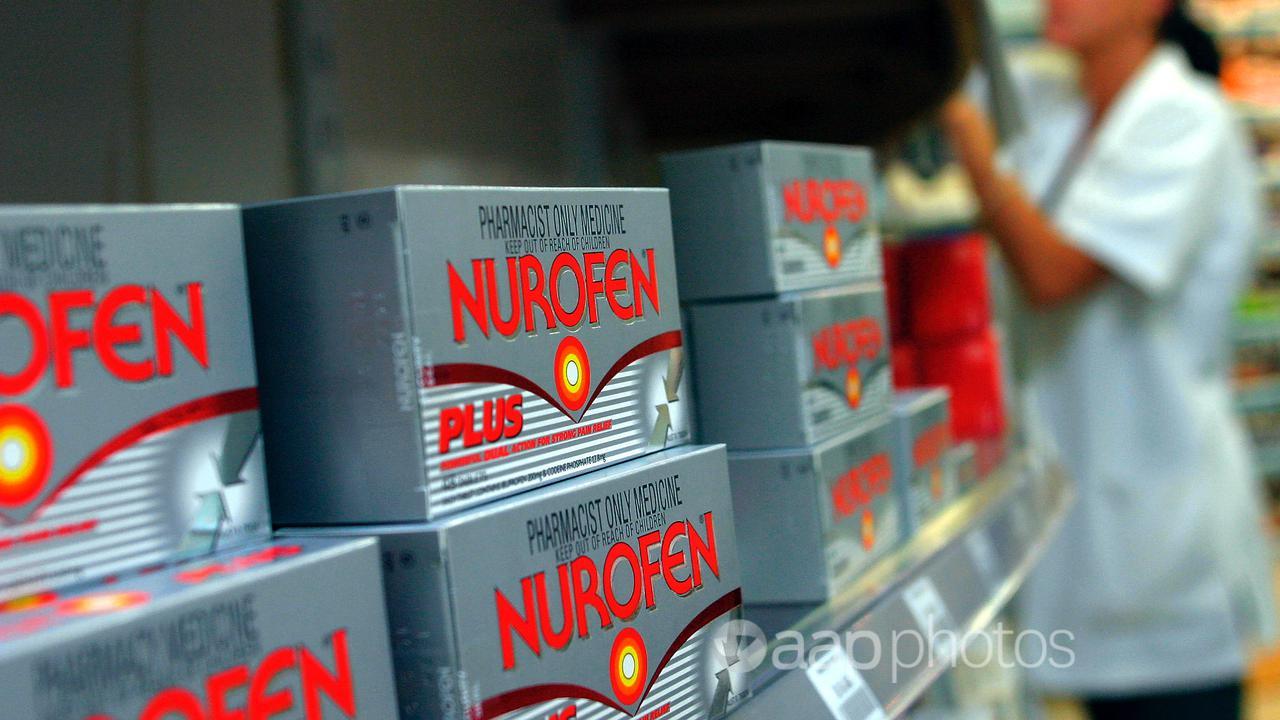A woman has claimed in a video on Facebook that she can prove Nurofen contains the compound, graphene oxide.
The woman claims the compound is used in the ink to display the N and two arrows on the tablets. In the video she is seen dissolving tablets in water before using a magnet to move around dark particles, purported to be graphene oxide. Other examples of the video are here and here.
But her claim is false. The Australian Therapeutic Goods Administration (TGA) said the substance is in fact iron oxide black, which is a permitted colourant for use in oral medicines.
This was reiterated by a spokeswoman for Nurofen, as well as experts who told AAP FactCheck iron oxide black is safe and commonly used in medicines.
A Nurofen spokeswoman said the claim in the video was incorrect.
“Iron oxides are widely used colourants in foods and pharmaceuticals…the black iron oxide used for Nurofen is pharmaceutical grade, is an approved food colourant and is compliant with regulatory requirements,” she said in an email.
Medicines must be approved by the TGA before they are included in the Australian Register of Therapeutic Goods (ARTG) and available for public consumption.
Nurofen’s TGA approved ingredient list has iron oxide black listed while there is no mention of graphene oxide, a compound that contains carbon, oxygen and hydrogen.
In an email to AAP FactCheck, a TGA spokeswoman said there was a stringent process to ensure public trust in medicines.
“The TGA conducts risk based testing of medicines to assess compliance of products to agreed standards such as the content of the active ingredients, the amount of any impurities present, uniformity of the product and attributes such as dissolution,” the TGA spokeswoman said.
“In addition the manufacturers of products are regularly inspected for compliance with good manufacturing practices which ensures the companies have systems in place to control and monitor that correct ingredients are used in the correct amounts when manufacturing products.”
Nial Wheate, associate professor at the Sydney Pharmacy School within the University of Sydney, said the TGA’s stringent requirements meant consumers could be certain of the stated ingredients.
“Manufacturers must make their medicines to a high standard in a TGA approved facility,” he told AAP FactCheck by email.
“There are severe penalties for companies that deliberately include different ingredients to those stated on the packaging. You can be certain of the ingredients in the medicine if you bought it from a reputable source (pharmacy or large chain Australian supermarket) and it has a TGA registration number on the packaging.”
Dr Wheate said it was likely the substance being moved by the magnet was the stated iron oxide black as it is “essentially tiny balls of rust” and thus reacts to magnetic fields.
He added: “Iron oxide is not dangerous at the levels included in medicines as it can be dissolved by stomach acid.”
Alastair Stewart, professor of pharmacology and therapeutics at the University of Melbourne, said graphene oxide is not registered for use as an ingredient, nor is it approved as an active pharmaceutical ingredient.
“Further research could see these types of nanomaterials be developed as medicines, but only after much preclinical and clinical research the outcomes of which are subjected to stringent, independent review process by agencies such as our own TGA and the FDA in the US to assess safety and benefits,” he said in an email.
Claims that graphene oxide is in COVID-19 vaccines have also been widely debunked (see here, here, here, here, here and here).
The Verdict
The TGA confirmed Nurofen does not contain graphene oxide and that the substance used for the ink is the colourant, iron oxide black. Experts said the use of iron oxide black in medicines is safe and that the TGA’s stringent regulatory requirements ensure the public can be confident in Nurofen’s stated ingredients.
False – The claim is inaccurate.
* AAP FactCheck is an accredited member of the International Fact-Checking Network. To keep up with our latest fact checks, follow us on Facebook, Twitter and Instagram.
All information, text and images included on the AAP Websites is for personal use only and may not be re-written, copied, re-sold or re-distributed, framed, linked, shared onto social media or otherwise used whether for compensation of any kind or not, unless you have the prior written permission of AAP. For more information, please refer to our standard terms and conditions.


















